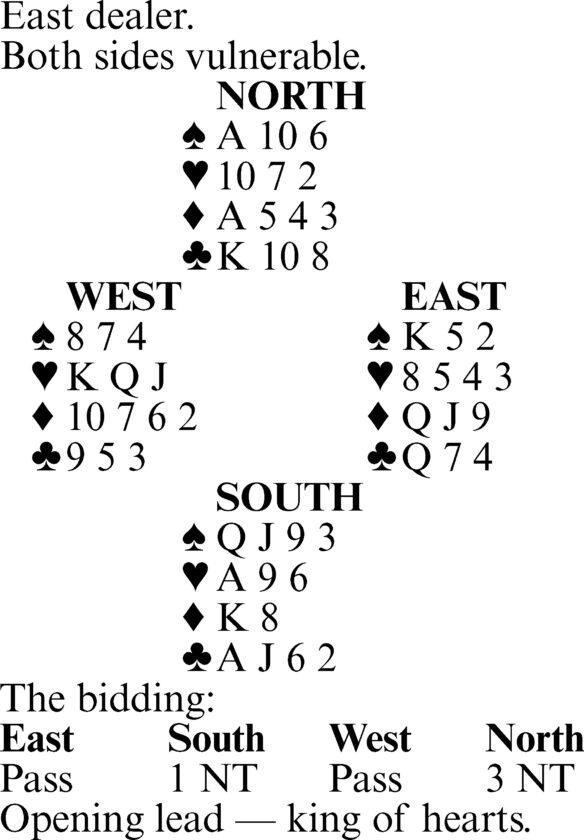Bridge by Steve Becker

Point count is often just as helpful during the play as it is during the bidding. Take this case where East made an intelligent use of point count to defeat three notrump.
West led the K-Q-J of hearts, East playing the 4-3-8 in that order. Declarer won the third heart with the ace, led the queen of spades and finessed. East took the king and returned a spade, intentionally not cashing his last heart. He was trying to convince declarer that West had the missing five of hearts.
South had eight sure tricks at this point and had to decide which way to take the two-way club finesse for his ninth trick. Convinced by East’s play that West had the missing heart, he won the spade return with the jack and led a club to the ten. This approach would have assured the contract, even if the finesse lost, had West held the 13th heart.
But when East showed up with the queen of clubs and the missing heart, South went down one. True, he might have gone down anyway had East cashed his heart earlier, but East’s subtle defense virtually guaranteed South would misguess the club finesse.
East’s play was well-founded. He knew, after West had shown up with the K-Q-J of hearts, that South had every missing honor card for his 15- to 17-point one-notrump opening. West had six points, dummy 11 and East eight to account for 25 points, leaving South with exactly 15 points, which had to include the A-J of clubs.
Luring declarer into taking the club finesse the wrong way involved high-level thinking by East — and it paid off very well indeed.
Tomorrow: The philosophical approach.

